July 9, 2025, 8:53 pm | Read time: 7 minutes
To this day, Lake Garda symbolizes the German longing for Italy and the south. Spring and fall, in particular, when the crowds of tourists have disappeared, are perfect for exploring the most beautiful spots around Lake Garda on a road trip.
From antiquity to modern times, poets from all countries agree that Lake Garda is one of the most beautiful they have ever seen. Even the Roman poets Virgil and Catullus sang of the Lacus Benacus. For Goethe, the lake was a “delightful spectacle,” and Kafka found the south “never again so charming and magnificent” as on the shores of Lake Garda. To this day, Lago di Garda symbolizes the German longing for Italy, for the south. TRAVELBOOK shows you how to explore the most beautiful places on Lake Garda on a road trip.
Overview
- Road Trip Around Lake Garda – Tips for the Route
- Start: Riva del Garda
- Stop 1: Limone (10 km)
- Stop 2: Pieve de Tremósine (10 km)
- Stop 3: Gargnano (28 km)
- Stop 4: Garden City Gardone Riviera (10 km)
- Stop 5: Italian Flair in Saló (3 km)
- Stop 6: Urban Life in Desenzano (15 km)
- Stop 7: Sirmione (7 km)
- Stop 8: Punta San Vigilio (25 km)
- Stop 9: In Goethe’s Footsteps in Malcesine (32 km)
- End: Torbole (16 km)
- The Lake Garda Road Trip on the Map
Road Trip Around Lake Garda – Tips for the Route
Start: Riva del Garda
Riva was already a popular spa town in the 19th century. Its Venetian palaces, the octagonal Baroque church, and the water-surrounded Scaliger Castle Rocca captivated Thomas Mann, Rainer Maria Rilke, and Arthur Schopenhauer. After a steep climb to the Bastione, the Venetian fortress ruin from 1508, you get a postcard view of the town and lake.
BILD Reisen: Discover the best hotels on Lake Garda now!
From above, the bizarre beauty of the fjord-like northern part of the lake, framed by cliffs, can be best enjoyed. The free climbers, who flock to the cliffs of the Brenta Group west of Riva, will gladly confirm this. However, an excursion up there is only recommended for experienced climbers.
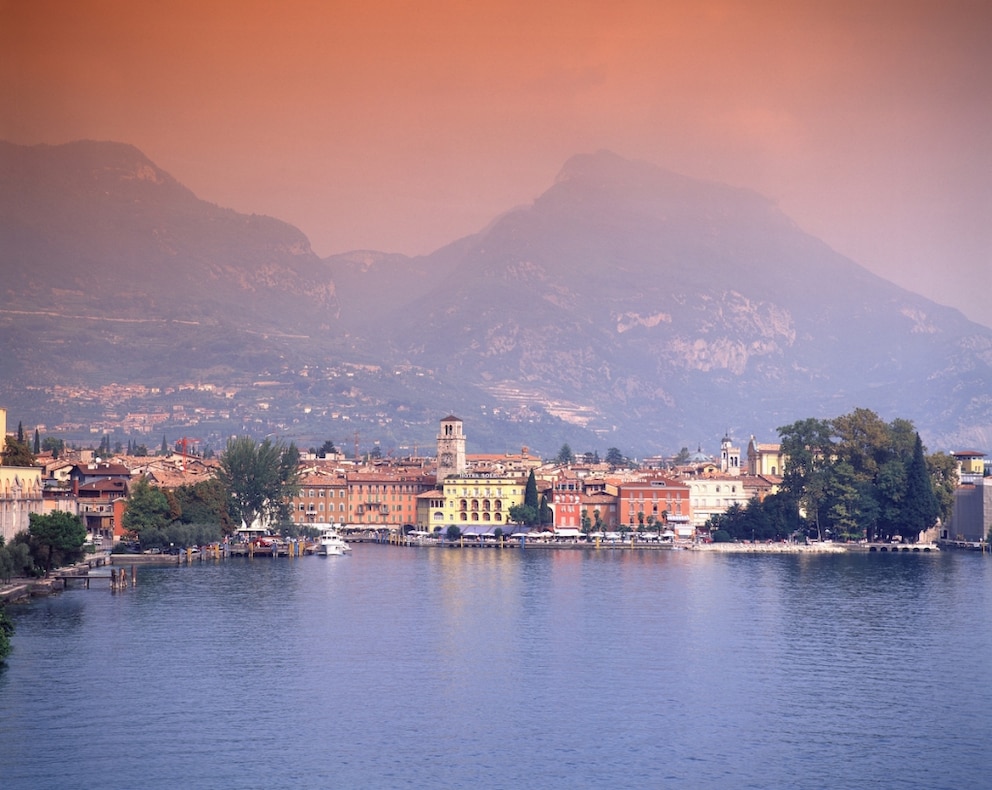
Also interesting: Lake Maggiore – as beautiful as Lake Garda, only much cheaper!
Stop 1: Limone (10 km)
The view of the lake is also spectacular from the car – on the Gardesana Occidentale, the western lakeside road, which only provided the secluded town of Limone with a road connection in 1932. Fourteen tunnels and galleries with lookouts make the lakeside road one of Italy’s most magnificent panoramic roads. Limone, with its narrow alleys, has clung like a swallow’s nest to the foot of the rugged Dosso dei Roveri mountain for 1,000 years – a true painter’s corner, especially beautiful in autumn when tourists are not crowding.
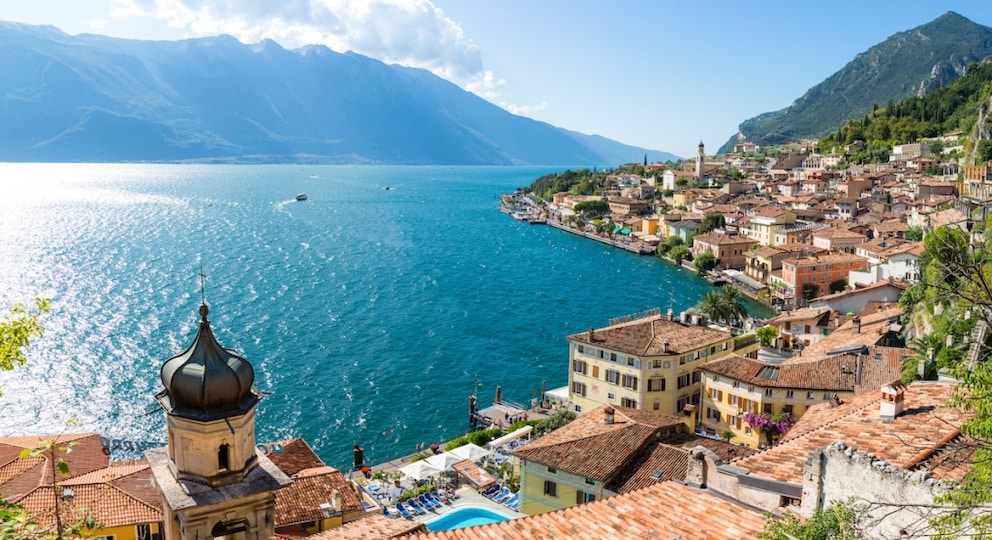
Stop 2: Pieve de Tremósine (10 km)
Good drivers dare a detour to the plateau – on a daring mountain road that winds up the steep walls in tight switchbacks to about 2,000 meters. With flower balconies and clean alleys, the 100-soul village of Pieve delights. Pure thrill is provided by the “Thrill Terrace” of the Hotel-Restaurant “Miralago”: from here, it drops sharply 350 meters into the depths.
Stop 3: Gargnano (28 km)
In addition to the citrus gardens on the mountainside, there are also stone citrus fruits to admire here: In the pointed arch cloister of the San Francesco Monastery from 1289, lemons and other southern fruits are carved into the column capitals – quite unique in Italy. Another gem of the town is the neoclassical Villa Feltrinelli directly on the lakeshore. During the war, it was temporarily Mussolini’s residence; today, it is a grand hotel with grandeur.
Stop 4: Garden City Gardone Riviera (10 km)
With an elegant car-free lakeside promenade and evening orchestral music, Gardone Riviera, the “Garden City,” attracts visitors. It owes its name to the botanical garden created in 1920 by the doctor Arthur Hruska, now called Fondazione André Heller under new ownership. In Gardone, the park and residential complex of the eccentric Italian poet Gabriele d’Annunzio (1863–1938) is particularly worth seeing, which gave the town the pompous “Vittoriale degli Italiani,” the Victory Monument of the Italians. His palazzo became a temple of art, and the park is full of curiosities – here, for example, a torpedo boat, d’Annunzio’s ancient Fiat, and the bow of the battleship “Puglia,” which he commanded in 1919, are on display.
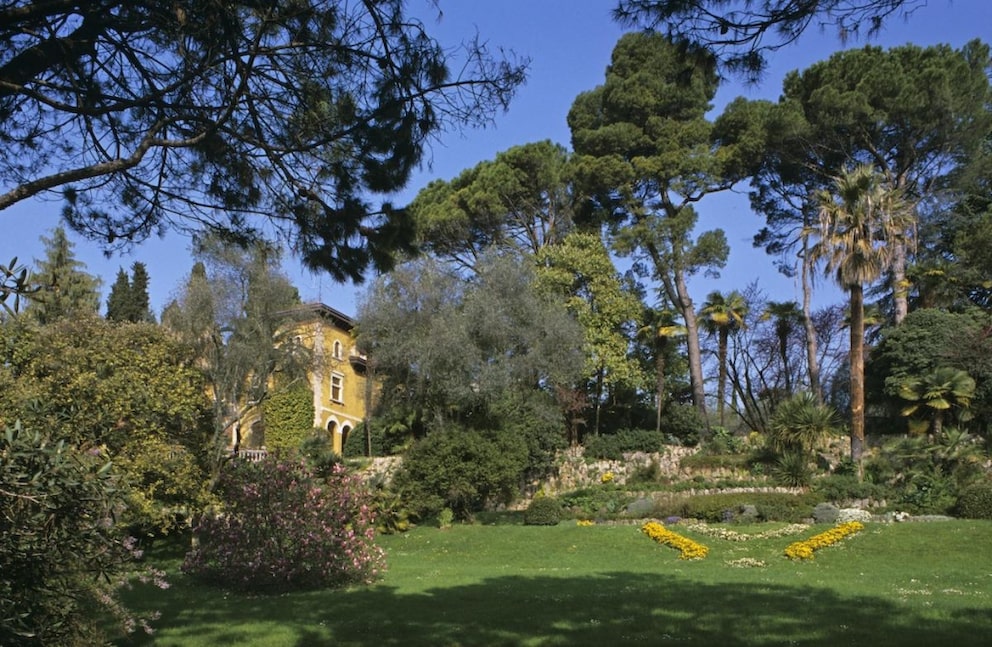
Stop 5: Italian Flair in Saló (3 km)
Saló is picturesquely situated on a horseshoe-shaped bay and is the “most Italian” place on the lake. This explains the high quality of the restaurants and the enormous density of boutiques. Particularly worth seeing is the late Gothic cathedral with its magnificent Renaissance portal made of white marble. To the south, between San Felice and Manerba, stretch fine, long pebble beaches. Above the coast, the hilly Valtenési wine region invites you to hike.
Stop 6: Urban Life in Desenzano (15 km)
With around 29,000 inhabitants, Desenzano is the largest city on Lake Garda. The omnipresent rattle of motor scooters, the many street cafés, and the characteristic arcades in the old town give the place its charming Mediterranean flair. For art lovers, the colorful mosaic floor of a Roman bath villa (from the third century) and Tiepolo’s “Last Supper” in the parish church are a must. Shopping fans should mark Tuesday: On this day, a lavish weekly market has been held regularly on the lakeside promenade since the Middle Ages.
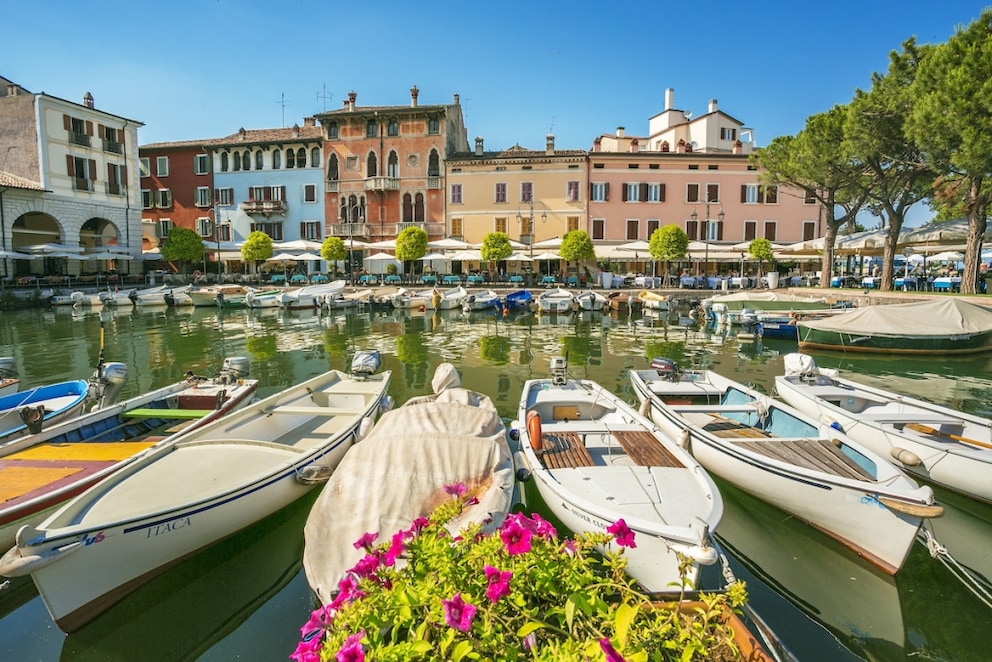
Stop 7: Sirmione (7 km)
“I have a great longing for Sirmione,” the soprano Maria Callas confessed to a friend shortly before her death. Her husband owned a stately villa on the peninsula jutting into the lake in the far south. The diva usually sat with her poodles in the 100-year-old “Caffè Grande Italia” (open from March 15 to October 31) with a Campari soda, or she studied recipes in the kitchen. The house specialty is a Cedrata, made from the juice of the Cedro, a citrus fruit in XXL format. Wonderfully refreshing! Otherwise, Sirmione is pure romance – from the Scaliger water castle to the ruins of an ancient Roman villa at the very tip of the peninsula, popularly known as the “Grottoes of Catullus.”
Stop 8: Punta San Vigilio (25 km)
Now it goes along the eastern shore – the so-called Olive Riviera – past Bardolino (red wine) and Garda (Venetian palaces) to the next promontory called Punta San Vigilio. It is one of the most romantic spots on the entire lake, appreciated worldwide: In the exclusive Locanda San Vigilio, Winston Churchill, Vivian Leigh, and Prince Charles, for example, stayed overnight.
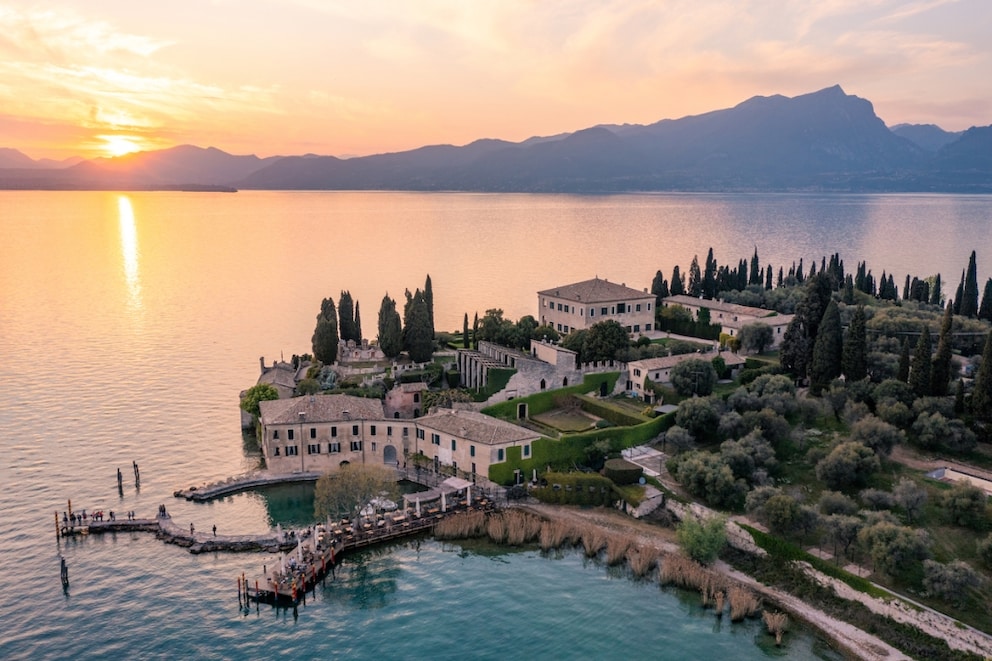
Stop 9: In Goethe’s Footsteps in Malcesine (32 km)
In 1786, Goethe succumbed to the charm of Malcesine’s labyrinth of alleys and the imposing Scaliger Castle. Because he drew it, he became suspicious – he was almost arrested as a spy at the time. Those who want to walk in the poet’s footsteps should choose comfortable footwear: The cobblestones are as humpy as the Hunchback of Notre-Dame.
End: Torbole (16 km)
At Torbole, at the northeastern tip of the lake, our tour comes to an end. Here you have the last chance to take a spin on the water before heading home. Either by excursion steamer for a romantic boat trip or on a surfboard: Torbole is considered Italy’s mecca for windsurfers, thanks to the south wind Ora, which creates waves like on the open sea.

The 9 Most Charming Places on Lake Garda

This Lake Is Still a Hidden Gem Between Switzerland and Italy

Anyone Who Moves to this Italian Region Receives 100,000 Euros as a Gift
The Lake Garda Road Trip on the Map
Text contribution: Elke Backert



